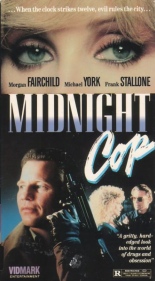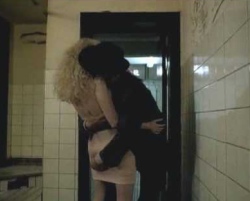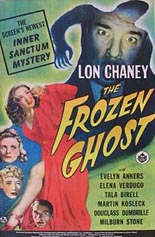
 The fourth of Universal Pictures’ six-film Inner Sanctum Mystery series, The Frozen Ghost stars a lean Lon Chaney Jr. as mentalist Gregor the Great. He puts on bravura stage shows in which he hypnotizes his assistant/fiancée, Maura (Evelyn Ankers, reuniting with Chaney after The Wolf Man), into being able to read the thoughts and Social Security numbers of audience members.
The fourth of Universal Pictures’ six-film Inner Sanctum Mystery series, The Frozen Ghost stars a lean Lon Chaney Jr. as mentalist Gregor the Great. He puts on bravura stage shows in which he hypnotizes his assistant/fiancée, Maura (Evelyn Ankers, reuniting with Chaney after The Wolf Man), into being able to read the thoughts and Social Security numbers of audience members.
One clearly soused skeptic thinks it’s a whole lotta phooey, so Gregor invites him onstage. Unfortunately, the drunk dies while under Gregor’s trance. Although doctors dub it a case of natural causes, Gregor believes he killed the guy with his eyes, so he breaks his engagement and wallows in guilt.
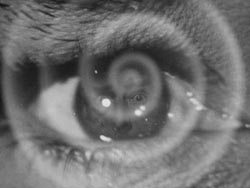 He hopes to begin life anew at a wax museum, of all places, but the beware-the-stare problem rises again. “Tragedy is determined to follow me wherever I go,” bemoans poor Gregor. As with all the hourlong Inner Sanctum pictures, what seems supernatural is easily explained by the unremarkable end.
He hopes to begin life anew at a wax museum, of all places, but the beware-the-stare problem rises again. “Tragedy is determined to follow me wherever I go,” bemoans poor Gregor. As with all the hourlong Inner Sanctum pictures, what seems supernatural is easily explained by the unremarkable end.
While the museum boasts likenesses of Cleopatra, Genghis Khan, Napoleon, Atilla the Hun, Lady Macbeth and the head of Marie Antoinette, the setting is not used to its full potential. Don’t expect the creepiness of 1933’s Mystery of the Wax Museum. Also, don’t expect a ghost — frozen, thawed, room-temp or otherwise. —Rod Lott

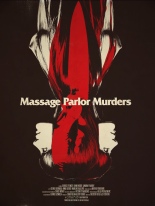
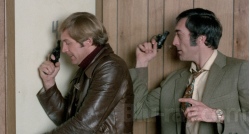
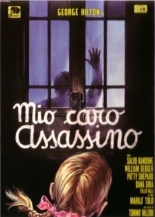
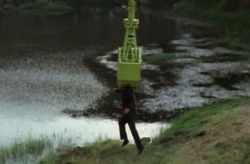 In the process, a black-gloved killer is busy knocking off virtually everyone Peretti questions. Quips a fellow officer, “Soon, they’ll have enough bodies to make up an ice hockey team.”
In the process, a black-gloved killer is busy knocking off virtually everyone Peretti questions. Quips a fellow officer, “Soon, they’ll have enough bodies to make up an ice hockey team.” 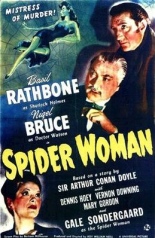
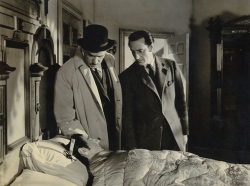 He’s right, of course, especially since the victims were catching Zs behind locked doors. Before the midpoint of the film, both Holmes and the viewer already know the culprit — the titular female, Miss Adria Spedding (Gale Sondergaard,
He’s right, of course, especially since the victims were catching Zs behind locked doors. Before the midpoint of the film, both Holmes and the viewer already know the culprit — the titular female, Miss Adria Spedding (Gale Sondergaard, 